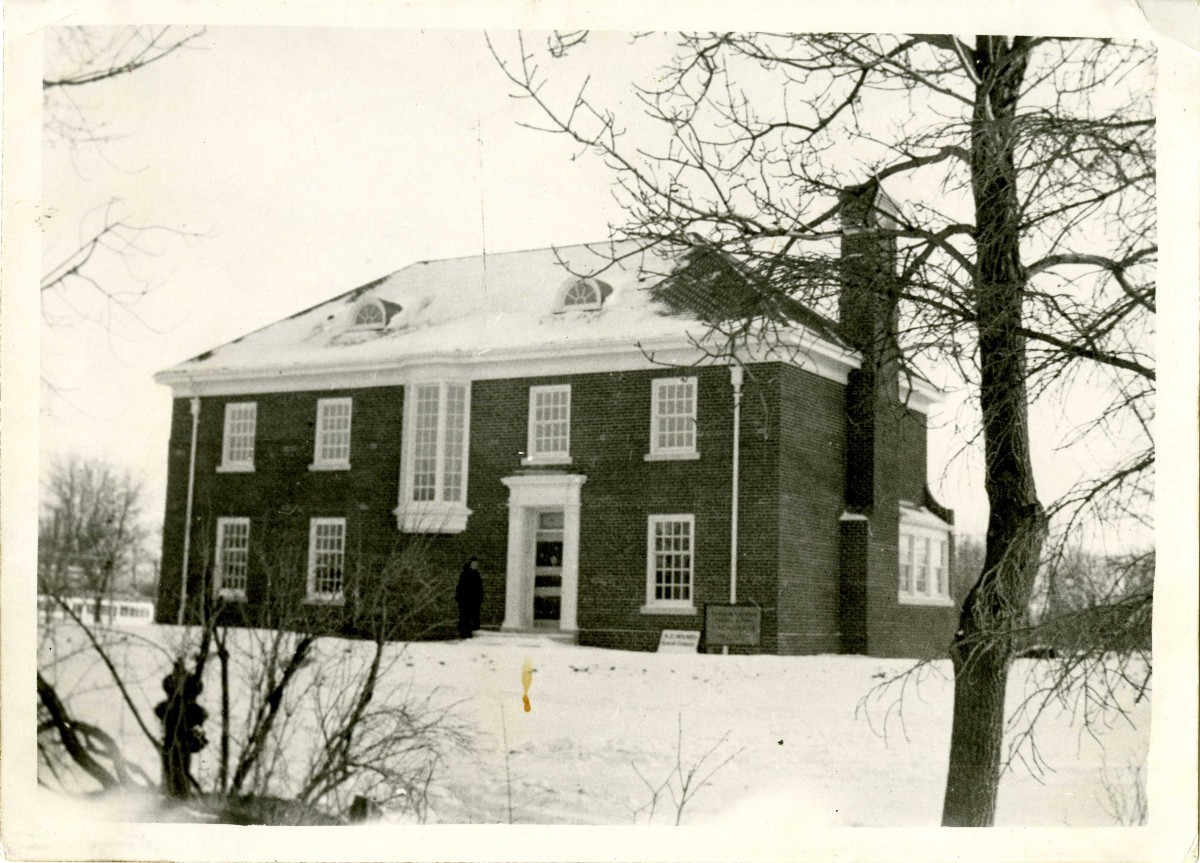
University of Manitoba Archives & Special Collections - Faculty of Human Ecology fonds (PC 49, A.86-42)
A Haunting in Fort Garry
Scary tales and paranormal lore from around campus.
At this time of year, ghosts and goblins are on the minds of many people. In an academic, scientific setting, one might expect that such things are not topics of discussion, yet the University of Manitoba has its share of spooky stories and ethereal connections.
“We have a very unique collection that chronicles historic scientific research into paranormal phenomena,” says Shelley Sweeney, head, archives & special collections of the University of Manitoba Libraries. She is referring to the Dr. T.G. Hamilton Fonds, a large collection of manuscripts, correspondence and photographs of spiritual apparitions.
In 1915, Hamilton was president of the Manitoba Medical Association and was elected a member of the provincial legislature. In 1918, soon after his young son’s death, he began to experiment with psychic phenomena. His aim was the scientific investigation of paranormal phenomena such as rappings, psychokinesis, ectoplasms, and materializations under scientific conditions that would minimize any possibility of error. Between 1926 and 1935 he presented 86 lectures and wrote numerous articles published in Canada and abroad. Hamilton’s wife Lillian carried on his paranormal experimentations following his death in 1935.
All positive prints taken from the photographic negatives have been retained with the written records of the experiments which they illustrate. Almost all the glass plate negatives were photographed for archival purposes, and the black and white glossy print collection is also available for researchers today. Much of the material has now been made available online at the archives website.

University of Manitoba Archives & Special Collections - Hamilton Family fonds (PC 12, A.79-41)
In addition, the archive contains 22 other collections of material related to psychic and other controversial phenomena. The collections and books were chosen for the value of their information about matters of the occult and paranormal, regardless of the “reality” of the phenomena. Some collections have direct and immediately apparent relevance while others are connected peripherally to psychical research and spiritualism. Also included are links to photograph collections in this area of study.
For example, books and other documents collected by noted Canadian architect Bernard Rasch are preserved here as well. A notable donor to The Winnipeg Foundation, Rasch collected books and other materials on UFO sightings, paranormal phenomena and occult societies. He donated his collection to the University of Manitoba in 2004.
Another notable collection is that of Robert Beamish, a noted Manitoba heart surgeon and physician who taught in the University of Manitoba Faculty of Medicine, established the department of cardiology at the Manitoba Clinic, was the Founding Director of the Manitoba Heart Foundation and the founding editor of the Canadian Journal of Cardiology. He was awarded honourary degrees from Brandon University in 1988 and the University of Manitoba in 1989. He received the Order of Canada in 1990 and the Order of Manitoba in 2000. Beyond his medical research, Beamish had a strong interest in psychical phenomena, and his personal papers included almost 30 years of notes on paranormal issues.
Beyond the archives’ documentation of historical studies regarding paranormal research, there are also some “less tangible” aspects of the paranormal on campus. Some buildings at the University of Manitoba, like many throughout the province, have been said to have “reputations,” and people have claimed to have had paranormal experiences in them.
On the site where ArtLab now stands, Alumni House, the former “Practice House” of the Faculty of Home Economics, had a reputation of haunting. Staff there claimed to have heard footsteps on old wooden staircases when the building was otherwise empty, and “cold spots” had been reported moving about the upper floors.
In the Art Barn, some students and staff claim to have seen the ghostly apparition of a former art professor, sitting quietly before a large canvas in an unoccupied room.
Other buildings where eerie events have been claimed include the Faculty of Human Ecology, Chancellor’s Lodge, Taché Residence and the FitzGerald Building.
But perhaps the best-known ghost at the University of Manitoba wasn’t even in Winnipeg, but at the Delta Marsh Field Station on the shore of Lake Manitoba. It even has a name: Murray.
Many students and staff have claimed to have experienced odd phenomena there, such as hearing chains rattling, windows and doors opening and closing of their own accord, and lights appearing in buildings that are unoccupied. Murray is said to have been a former caretaker of the Station, whose ghost still maintains a watch on the premises, though whether Murray has moved on since the Station was closed is unknown.
So, as we approach Hallowe’en, the University of Manitoba continues to demonstrate it is a source for information – and speculation – not only about what is known, but what is unknown.






